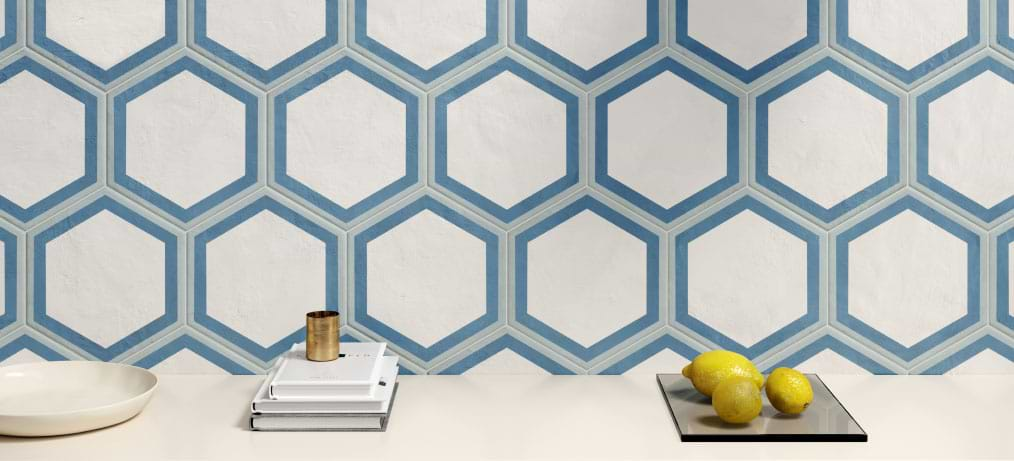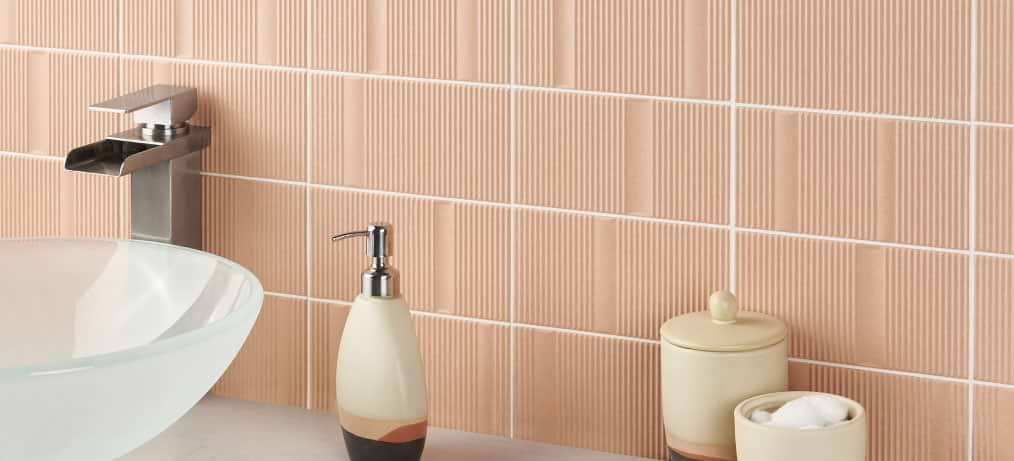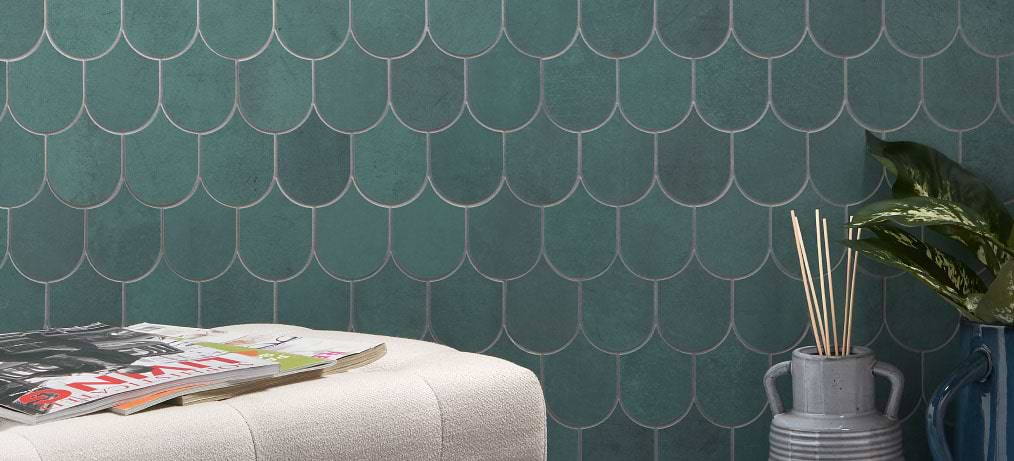Tiles are a versatile and practical choice for any home renovation project, offering durability and a wide range of design possibilities. However, if you’re looking for something a little different than classic white subway tiles, we understand.

While white subway tile has been a go-to choice for many homeowners for years, there are countless other tile options that can bring depth, texture, and character to your home. Whether you’re planning a kitchen backsplash or a bathroom renovation, choosing the right tile can elevate your space from mundane to stunning.
In this guide, we’ll explore a variety of tile options beyond white subway tile and provide you with tips on how to choose the right tile to match your style, needs, and preferences.

Consider Your Color Palette
The first thing to consider is your existing color palette. You want to choose a tile color that complements the colors already in your space rather than clashing or overwhelming them.
To start, take a look at the dominant colors in your room. Consider the walls, flooring, cabinetry, and other elements that are already present. Do you have warm or cool tones? Are your colors bright and bold or muted and neutral?
Once you have a sense of your color palette, you can start to look for tiles that will complement it. Some people do this by using a color wheel and the color coordination ideas that come with it.
Another important consideration is the mood or style you want to achieve. Do you want a space that feels calm and serene or bold and dramatic? The tile color you choose can have a big impact on the overall mood and style of your space.
Here are a few tips for selecting a tile color based on your color palette and desired mood or style:
- If your color palette is mostly neutral, consider a tile in a bold or vibrant hue to add some interest and depth.
- If your color palette is already quite busy, opt for a tile in a more muted or subtle color to avoid overwhelming the space.
- For a modern, minimalist look, choose a tile in a monochromatic color scheme, such as shades of gray or black.
- If you want a warm and inviting atmosphere, choose a tile in a warm tone, such as terracotta or copper.
- For a cool and calming feel, choose a tile in a cool tone, such as seafoam green or blue.
Examples of color schemes and tile colors that work well together include pairing earthy brown tiles with cream-colored walls and light- wood cabinetry for a rustic look. Or choosing navy blue tiles with white accents for a nautical-inspired bathroom.
With some planning, you can choose a tile color that will complement your existing color palette and help you achieve the mood and style you’re after.

Look for Unique Shapes
While subway tiles are rectangular and come in standard sizes, there are many other tile shapes available that can add visual interest and dimension to a space. Choosing a tile with a unique shape can create a stunning focal point and elevate the design of your room.
One popular shape is the hexagon tile, which is a six-sided polygon. Hexagon tiles can be arranged in different tile laying patterns to create a variety of looks, from geometric and modern to classic and elegant.
Another unique shape is the arabesque tile, which has a curvaceous and intricate design. Arabesque tiles are often used as a decorative accent or to create a feature wall. Fish scale tiles are another popular option, which mimics the look of overlapping fish scales. These tiles can create a beautiful and organic texture, perfect for adding interest to a bathroom or kitchen backsplash.
Here are a few tips for incorporating unique tile shapes into your home design:
- Use unique tile shapes sparingly as an accent rather than covering an entire wall or floor.
- Choose a tile shape that matches the mood and style of your space. For example, hexagon tiles work well in modern or industrial spaces, while arabesque tiles are perfect for a bohemian or eclectic style.
- Consider using a unique tile shape in a monochromatic color scheme to create a subtle and sophisticated look.
- Use unique tile shapes to create a pattern or design on a feature wall, backsplash, or fireplace surround.

Texture and Finish
Texture and finish are important factors to consider when choosing a tile for your home. Adding texture or a unique finish to your tiles can create depth and dimension, making a space more visually interesting.
There are many different textured and finished tiles to choose from, such as matte, glossy, or metallic tiles. Matte tiles have a non-shiny finish and a rougher texture, which can add a natural or organic feel to a space. Glossy tiles, on the other hand, have a reflective surface that can make a room feel brighter and more spacious. Metallic tiles, such as copper or brass, can add a feel of luxury and elegance to a space.
When incorporating texture and finish into your home, it’s important to think about the overall aesthetic of your space. Mix and match different finishes and textures to create a unique and layered look. For example, combine matte and glossy tiles in a unique geometric pattern for a modern look.
Use metallic tiles sparingly as an accent to create a sense of luxury and sophistication.
By incorporating texture and finish into your home design, you can create a visually interesting and dynamic space that reflects your style and taste.

Patterned Tiles
If you’re looking to add visual interest and personality to your space, consider incorporating patterned tiles into your home design. Patterned tiles can add a unique and decorative element to a space, creating a focal point or feature that can set the tone for the entire room.
There are many different types of patterned tiles to choose from, such as Moroccan, encaustic, or geometric tiles. Moroccan tiles often feature intricate and colorful designs, while encaustic tiles have a more subdued and organic feel. Geometric tiles can range from simple shapes to complex patterns, and can be used to create a modern or retro look.
When incorporating patterned tiles into your home design, it’s important to consider the overall style and aesthetic of the space before choosing.

Natural Stone
Natural stone tiles add warmth and texture to your space, creating a sense of depth and character that can’t be achieved with other materials. These tiles come in various colors and styles, ranging from cool and sleek marble to rustic and earthy slate or travertine.
Here are a few tips for incorporating natural stone tiles into your home design:
- Use natural stone tiles as a feature wall or backsplash to create a focal point in a room.
- Pair natural stone tiles with other natural materials, such as wood or leather, to create a warm and inviting space.
- Consider using natural stone tiles in a neutral color palette to create a timeless and classic look.
- Use natural stone tiles in a bathroom or spa-like space to create a sense of relaxation and tranquility.
By incorporating natural stone tiles into your home design, you can create a unique and inviting space that reflects your personal style.

Mosaic Tiles
Mosaic tiles are small tiles arranged together to create intricate patterns and designs. They can be made from various materials, including glass, ceramic, or stone. Mosaic tiles are a wonderful way to add visual interest and texture to a space.
One of the benefits of mosaic tiles is their versatility. Mosaic tiles can be used as a feature wall, or backsplash in a kitchen or bathroom, or as a decorative accent in a living room or bedroom.
If you’re looking for experts in tile with a wide variety of offerings, be sure to check out Tilebar. We not only carry tiles but also grout, sealers, caulk, and more to help you get started on your next tiling project.

